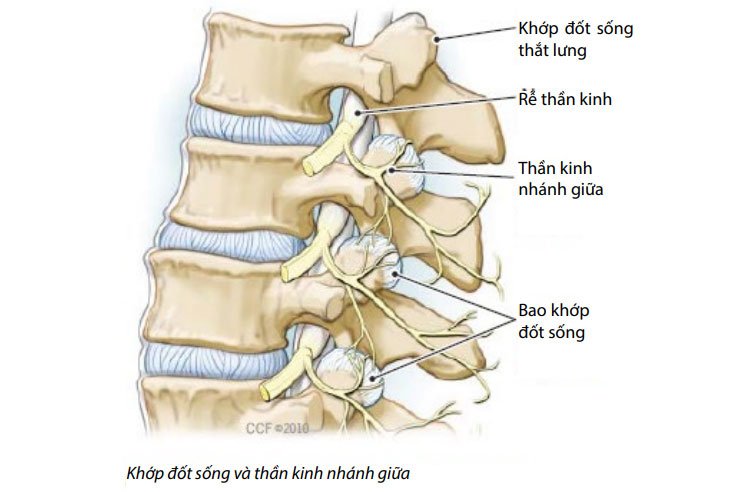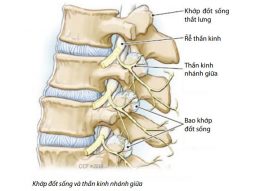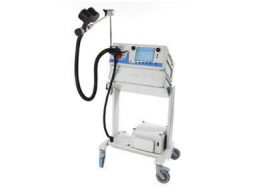WHAT IS A FACET JOINT INJECTION?
Facet joints are small joints that link the bones of the spine together. The facet joints allow movement and stabilise the spine. Wear and tear, inflammation and injury to the facet joints may cause pain in some people. Several injections to different facet joints may be needed depending on the site of pain.
A facet joint injection is an injection around or into the facet joint. Facet joints injection can be performed for diagnosis or therapeutic purposes. The injection provides information about whether pain is originating from your facet joints.
Usually, several injections are undertaken during the same procedure. It is used for localised spinal pain where simpler measures have not helped. It can help your pain by reducing some of the pain signals from the joint and, though pain relief may be short-lived, some people can get significant and long lasting pain relief from these injections.

The injection contains local anaesthetic often with a small amount of steroid. The injection is usually undertaken alongside other treatments such as physiotherapy.
IS THIS THE RIGHT TREATMENT FOR ME?
Other treatment options will be discussed with you before deciding to go ahead with the injection(s) and your consent is needed. The decision on whether or not to go ahead with the injection is a shared decision between you and your doctor. Your doctor will be able to provide you with up-to-date information about the likelihood of this being a successful treatment for you and how this treatment fits into the best pathway of care.
It is important to let your doctor know:
- If you have an infection in your body or on the skin of your back, as your doctor will have to postpone the treatment until the infection is cleared;
- If you have been started on anticoagulant or antiplatelet medicines that “thin the blood” such as aspirin, warfarin (Coumadine®), heparin (Lovenox®), ticlopidine (Ticlid®) or Clopidogrel (Plavix®) or if you are taking anti-inflammatory medications (such as ibuprofen, diclofenac, piroxicam, etc.), this may require extra preparation;
- If you suffer from diabetes, because the use of steroids during injections may cause your blood sugar to change requiring monitoring and adjustment of your diabetic medication;
- If you have any allergies.
You must also inform the doctor if there is any chance that you could be pregnant.
Finally, if you are planning to fly or travel abroad within two weeks after the injections, please let your doctor know as it may be best to change the date of the injections.
WHAT WILL HAPPEN TO ME DURING THE TREATMENT?
Before the injection, your doctor will discuss the procedure with you. Your doctor will obtain your consent before the injection. The treatment will take place in a dedicated area with trained personnel. An X-ray machine (or other forms of image guidance) will be used to enable accurate injection. The procedure will take approximately 20 to 30 minutes. Not all doctors undertake these injections in exactly the same way but the following usually happens:
- Observations such as blood pressure and pulse rate may be made;
- You will be lying face down during the whole procedure;
- A small needle (cannula) may be placed in the back of your hand;
- You will be carefully positioned and the skin around the injection site(s) will be cleaned with an antiseptic solution or spray; this can feel very cold;
- X-ray (or an alternative way of guiding the needles) will be used;
- You will feel a stinging sensation as local anaesthetic is injected to numb the skin and surrounding tissues. Your doctor will warn you of this first;
- The doctor will direct the injections to the area(s) suspected to be a source of pain;
- When the injections are made, you may feel pressure, tightness or a pushing sensation. If there is any discomfort, do let the doctor know

WHAT WILL HAPPEN TO ME AFTER THE INJECTIONS?
After the injections you will be taken to a recovery or ward area where nursing staff will observe you. Sometimes you will be asked to lay flat for about 30 minutes or longer. You may be assisted to sit up and your blood pressure and pulse may be checked. You will be advised when to get dressed and be given assistance to help to ensure that you can stand safely after the procedure.
Your pain will be assessed at rest and during activities of daily living such as walking and moving your back. You will be given further advice when you are ready to go home.
WHEN WILL I BE ABLE TO GO HOME FROM HOSPITAL AFTER MY INJECTIONS?
You will usually be able to return home within a few hours after the injection and in some cases much sooner, depending on how long your doctor or nurse want you to stay for recovery. Please ensure that you have made arrangements for someone to collect you after the procedure. Failure to do so will likely result in your procedure being cancelled. It is unsafe for you to drive home immediately after the procedure.
WHAT CAN I DO AFTER MY PROCEDURE?
- Do not drive or operate machinery for at least 24 hours after the procedure.
- You may eat your normal diet.
- Do not participate in strenuous activity that day.
- You may remove any bandages the morning following the procedure.
- You may take a shower but do not take a bath or sit in a hot tub for 24 hours.
- If you are taking a blood thinner you may restart it.
WHEN CAN I RETURN TO WORK AFTER THE PROCEDURE?
This will vary between individuals and may depend on the nature of your work. It is difficult to give general advice and so you should discuss this with your doctor.
WILL I EXPERIENCE ANY SIDE-EFFECTS?
As with any procedure, side-effects may occur. These are usually minor but there are risks with this procedure. Side-effects may include:
- Mild local tenderness and/or bruising at the site of the injection, that usually settles over the first few days;
- The local anaesthetic may rarely spread causing some numbness and/or weakness in your legs and other areas. Should this occur, the effect is temporary and will rapidly resolve over minutes or rarely hours;
- Infection. This is rare. You should seek medical help if there is local warmth or redness over the site of injection with tenderness and/or you feel hot and unwell. This may require antibiotic treatment;
- There are important nerves in the spine, but serious nerve injury is extremely rare (less than 1 in 10,000 cases);
- Injection treatments are not always effective and may not help your pain.
WHAT CAN I EXPECT IN THE DAYS AFTERWARDS?
You may experience some soreness or aching at the injection site. Please keep the area of the injections dry for 24 hours following the procedure. Do not worry if your pain feels worse for a few days as this sometimes happens. Take your regular pain killers and medications as normal and this should settle down. Try to keep on the move about the house whilst avoiding anything too strenuous.
If you develop a fever, chills, increasing pain, or if you have new symptoms, please contact your doctor.
WHAT SHOULD I DO IN THE WEEKS AFTER THE INJECTIONS?
As your pain decreases, you should try to gently increase your exercise. Simple activities like a daily walk, using an exercise bike or swimming on your back will help to improve your muscle tone. It is best to increase your activities slowly. Try not to overdo things on a good day so that you end up paying for it with more pain the following day.

 Vi
Vi 












